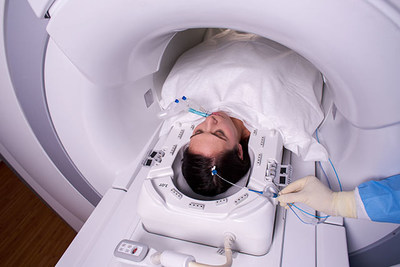
News Releases
Medtronic Receives Health Canada Licence for Visualase™ MRI-Guided Laser Ablation System
Minimally Invasive Application Allows for Improved Precision and Faster Recovery Time BRAMPTON, ON, Nov. 22, 2018 /CNW/ - Medtronic of Canada Ltd., a subsidiary of Medtronic plc (NYSE: MDT)...

Minimally Invasive Application Allows for Improved Precision and Faster Recovery Time
BRAMPTON, ON, Nov. 22, 2018 /CNW/ - Medtronic of Canada Ltd., a subsidiary of Medtronic plc (NYSE: MDT) announced today that it has received a licence from Health Canada for the Visualase™ MRI-Guided Laser Ablation System. The Visualase system provides advanced MRI-guided laser ablation technology for use in cranial neurosurgery procedures.

Resective neurosurgery often requires surgeons to navigate in the proximity of critical brain structures. Visualase MRI-Guided Laser Ablation allows precise targeting of unwanted harmful soft tissue, ablating them without damaging surrounding healthy tissue.
"Based on my large personal experience in laser ablation of brain tumours, I am very excited to see the technology made available to the people of Canada," says Dr. Brian Toyota, neurosurgeon. "This introduction of minimally invasive laser technologies will greatly benefit those Canadians who battle with brain tumours."
Visualase uses a small probe containing an optical fiber to deliver laser energy to the target area in the brain. As light is delivered through an applicator, temperatures in the target area begin to rise, destroying the unwanted soft tissue.1 Due to the minimally invasive nature of the procedure, patients typically go home the next day with less surgical trauma, and little or no scarring.1-10
"The launch of Visualase means that physicians will have more options to reduce the need for invasive surgery," said Peter Tomashewski, senior director for Restorative Therapies at Medtronic Canada. "We are pleased to offer this milestone innovation in Canada, and look forward to continued collaboration with physicians to improve outcomes for their patients."
About Medtronic Canada
Proud to celebrate 50 years in Canada in 2018, Medtronic Canada (www.medtronic.ca), headquartered in Brampton, Ontario, is a subsidiary of Medtronic plc, which is one of the world's largest medical technology, services and solutions companies — alleviating pain, restoring health and extending life for millions of people around the world. Medtronic employs more than 1,100 people in Canada, serving physicians, hospitals and patients across the country. The company is focused on collaborating with stakeholders around the world to take healthcare Further, Together.
Any forward-looking statements are subject to risks and uncertainties such as those described in Medtronic's periodic reports on file with the Securities and Exchange Commission. Actual results may differ materially from anticipated results.
1 | Carpentier, A., et. al. Real-time magnetic resonance-guided laser thermal therapy for focal metastatic brain tumors. Neurosurgery July 2008; 63:521-529. |
2 | Carpentier, A., et. al. MR-guided laser-induced thermal therapy (LITT) for recurrent glioblastomas. Lasers in Surgery and Medicine 2012; 44:361-368. |
3 | Curry, D., et. al. MR-guided stereotactic laser ablation of epileptogenic foci in children. Epilepsy & Behavior 2012; 24:408-414. |
4 | Esquanazi, Y., et. al. Stereotactic laser ablation of epileptogenic periventricular nodular heterotopia. Epilepsy Research 2014; 108:547-554. |
5 | Fabiano, A. and Alberico, R. Laser-interstitial thermal therapy for refractory edema from post-radiosurgery metastasis. World Neurosurgery 2014; 1.E1-1.E4; www.worldneurosurgery.org. |
6 | Gonzalez-Martinez, J., et. al. Robot-assisted stereotactic laser ablation in medically intractable epilepsy: operative technique. Neurosurgery Publish Ahead of Print 2014; DOI: 10.1227/NEU.0000000000000286. |
7 | Jethwa, P., et. al. Treatment of a supratentorial primitive neuroectodermal tumor using magnetic resonance-guided laserinduced thermal therapy. J Neurosurg Pediatrics 2011; 8:468-475. |
8 | Rao, M., et. al. Magnetic resonance-guided laser ablation improves local control for post-radiosurgery recurrence and/or radiation necrosis. Neurosurgery Publish Ahead of Print 2014; DOI: 10.1227/NEU.0000000000000332. |
9 | Torres-Reveron, J., et. al. Stereotactic laser induced thermotherapy (LITT): a novel treatment for brain lesions regrowing after radiosurgery. J Neuroncol 2013; 113:495-503. |
10 | Wilfong, A. and Curry, D. Hypothalamic hamartomas: Optimal approach to clinical evaluation and diagnosis. Epilepsia 2013; 54(Suppl. 9): 109-114. |

SOURCE Medtronic of Canada, Ltd.

